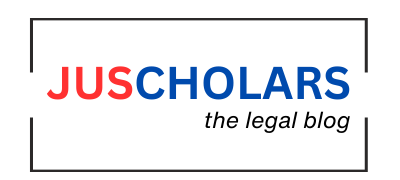Introduction
On 19 August 2025,the Delhi High Court ordered Internet Service Providers to block access to Sci-Hub, Library Genesis (hereafter referred to as ‘LibGen’) and related “shadow library” mirrors[1] – an injunction that instantly shifted a long-running technological, ethical and policy debate into a concrete exercise of Indian intellectual-property law.
This article analyses this order from a strictly IP-oriented perspective. The next two sections set out: (a) the black-letter legal framework that makes publishers’ claims plausible, and (b) the principal doctrinal and public-law arguments that show why the Court’s reasoning is contestable.
- The Legal Framework: Ownership, Infringement and the Court’s Reasoning
At its base, this dispute turns on copyright– theexclusive legal rights to reproduce and distribute literary works. In academic publishing the practical mechanism is well known: most journals require authors to transfer copyright or grant exclusive licences on submission[2], which places the publisher (not the author) in the position of the statutory copyright owner. This contractual architecture is a decisive fact for any infringement suit.
Sci-Hub’s practice is straightforward technically but legally significant: it copies, stores, and shares large numbers of publisher-owned, paywalled articles.[3] From the plaintiffs’ perspective that conduct is classic prima-facie reproduction and communication to the public – thecore acts of infringement under the Copyright Act. Publishers therefore sought and obtained injunctive relief, characterising Sci-Hub and LibGen as “rogue websites” whose continued operation inflicts concrete economic harm on the subscription model. The Delhi High Court’s order reflected this black-letter analysis, instructing government agencies and ISPs to implement blocks as a proportionate remedy.[4]
Two contextual facts strengthen the publishers’ case. First, courts internationally have repeatedly recognised the violative nature of Sci-Hub’s distribution – forexample, a U.S. district court awarded damages to Elsevier in earlier litigation.[5]Second, Sci-Hub was shown to bypass paywalls using stolen institutional credentials and proxy servers, then permanently host the copied articles – conduct courts have viewed as wilful, harmful to subscription markets, and justifying blocking or injunctive relief.[6] These practicalities help explain why courts inclined to protect registered copyright owners have favoured blocking remedies.
- Why the Legal Reasoning is Contestable – Statutory, Doctrinal and Public-Law Counters
While the textbooks make the publishers’ claim straightforward, several doctrinal and constitutional touchstones complicate the picture.
1. Statutory exceptions (fair dealing). Section 52 of the Copyright Act, 1957 enumerates non-infringing uses – including reproduction for research, private study and instruction – and specifically contemplates library/educational reproductions.[7]Interpreting Section 52 in light of educational realities is the single most important statutory response to a blanket injunction against access. Scholars have stressed that overzealous copyright enforcement is fundamentally at odds with educational access.[8]
2. Precedent on educational reproductions. The Delhi “DU Photocopy” litigation (University of Oxford v Rameshwari Photocopy Services) is the canonical domestic example where the High Court accepted that course-packs and instructor-directed reproductions can fall within Section 52’s educational exception; that decision is routinely invoked to show that not every unauthorised copy for learning is ipso facto unlawful.[9] Any argument against Sci-Hub must grapple with the doctrinal logic and policy thrust of that decision.
3. Limits of copyright protection over information. The Supreme Court’s decision in Eastern Book Co. v. D.B. Modak underscores a basic principle: copyright protects expression, not facts or raw information.[10] Academic articles are hybrid texts – factual contributions wrapped in expressive presentation – and doctrine requires courts to parse whether the protection sought is appropriately narrow or monopolistic.[11]
4. Public-interest and constitutional balancing. Indian IP jurisprudence has repeatedly recognised that monopoly rights are not absolute where public welfare is implicated (patent jurisprudence in Novartis v. Union of India is the salient analogue).[12] The argument runs that access to research – especially publicly funded research – implicates the rights to education and to receive information (Article 21[13] and Article 19(1)(a)[14]). Any blocking order must pass the judiciary’s structured proportionality test, as refined in Modern Dental College & Research Centre v. State of Madhya Pradesh – and a blanket, undifferentiated ban is unlikely to survive the necessity/least-restrictive-means and balancing stages.[15]
5. Competition and structural concerns. Finally, the doctrinal critique intersects with competition policy: the so-called “serials crisis” and the concentrated market power of large publishers create welfare losses that simple copyright enforcement cannot address. Courts that issue sweeping injunctions without engaging these structural pathologies risk entrenching an oligopoly over knowledge dissemination.
- The “One Nation, One Subscription” Scheme: Promise and Pitfalls
The Union Cabinet approved the One Nation One Subscription (ONOS) scheme on 25th November, 2024. Its core idea is simple: the state would negotiate a single, nationwide deal with major publishers, giving all Indian universities and research institutions access to journals behind paywalls.[16] In theory, ONOS could have balanced copyright enforcement with equitable access – researcherswould obtain lawful access without recourse to Sci-Hub, and publishers would retain compensation through a large state-brokered licence.
Yet implementation has proven elusive. Critics point out that a state-wide subscription still funnels vast public money into the hands of a few global publishers[17], entrenching their market power and doing little to promote sustainable or locally-driven publishing. Smaller institutions and independent researchers outside the university system risk being left out, since ONOS Phase-I only covers government higher-education and R&D institutions while excluding private universities.[18] Even within the eligible pool, implementation has lagged: a parliamentary panel reported in August 2025 that nearly 4,000 of the 7,008 eligible institutions have not yet received any benefits of the scheme.[19]
ONOS may solve the access problem in the short term, but it does not answer the deeper structural question: should the financial surplus of scientific publishing accrue to private firms, or should it be reinvested into research and dissemination?
The timing of the Sci-Hub litigation underscores this problem. While courts enforce copyright and policymakers attempt to purchase access, the underlying research is largely produced in publicly funded laboratories and universities. Without structural reform of ownership and distribution, ONOS risks becoming a recurring fiscal transfer from taxpayers to private intermediaries, rather than a sustainable model for open science.
- Who Creates, Who Profits: The Asymmetry of Academic Publishing
A striking feature of this dispute is the divergence between authorship and ownership. Academic research is typically funded by public grants, executed by faculty and graduate students employed by public universities, and peer-reviewed on a volunteer basis. Yet once accepted for publication, the work is frequently transferred in copyright to commercial publishers. Authors often sign away their rights with little bargaining power, motivated by the “publish or perish” imperative of academia.[20]
The result is an asymmetry: the people who create and validate knowledge rarely see direct financial benefit from its circulation.[21] Instead, publishers extract revenue by selling access back to the very universities that funded the work. Subscription costs run into millions of dollars annually for elite institutions, while smaller colleges often cannot afford comprehensive access.[22]
Sci-Hub, whatever its legal status, gained popularity precisely because it exposes this contradiction. Its existence is not an isolated act of piracy but a symptom of a deeper tension between knowledge as a public good and knowledge as a proprietary commodity.[23] From an IP law perspective, the difficulty is not that copyright is misapplied – black-letterlaw clearly favours the publishers – butthat the law’s allocation of entitlements no longer aligns with the realities of academic production.
Conclusion
Courts are correct to apply the statutes as written. Copyright is a legal entitlement, and Sci-Hub’s conduct – wholesalereproduction and dissemination – fitssquarely within the statutory definition of infringement. In this sense, the Delhi High Court’s decision cannot be dismissed as doctrinally unsound.
But legal correctness is not the same as legitimacy. When a system consistently rewards intermediaries over creators, and when it places life-saving knowledge behind paywalls accessible only to the wealthy or well-institutionalised, the law’s distributive consequences deserve scrutiny. The Indian Copyright Act does contain broad educational exceptions, and Supreme Court jurisprudence in both copyright and patent domains shows that public-interest limitations are an accepted part of our IP framework. The existence of such doctrines signals that the law itself anticipates conflicts between monopoly rights and social welfare.
The Sci-Hub injunction, therefore, represents more than the enforcement of private rights: it is a test of whether IP law in India will continue to tilt toward protecting global publishing oligopolies, or whether courts and policymakers can re-interpret statutory provisions in light of India’s constitutional commitments to education. ONOS is one attempt at resolution, but without structural reform it risks becoming another mechanism for funnelling public money to private publishers.
A balanced conclusion does not require romanticising Sci-Hub. Its legality is weak, its security practices are opaque, and its future precarious. Yet the popularity of Sci-Hub signals something real: researchers, students, and teachers perceive an access gap that the current IP regime does not bridge. If the law is to remain legitimate, it must account for this reality. The future of intellectual property in academic publishing lies not in policing shadow libraries into oblivion, but in designing frameworks where those who create knowledge and those who need it can interact withoutbarriers.
[1]The Hindu Bureau, Delhi High Court orders Sci-Hub to be blocked in India, Hindu, Aug. 23, 2025, https://www.thehindu.com/sci-tech/technology/delhi-high-court-orders-sci-hub-to-be-blocked-in-india/article69967768.ece.
[2]Copyright Transfer, Science Direct, https://www.sciencedirect.com/topics/social-sciences/copyright-transfer.
[3]Daniel S. Himmelstein et al., Sci-Hub provides access to nearly all scholarly literature, 7 eLife (2018), https://doi.org/10.7554/elife.32822.
[4]Elsevier Ltd. and Ors. v. Alexandra Elbakyan and Ors., 2025 LiveLaw (Del) 1008.
[5]Quirin Schiermeier, US court grants Elsevier millions in damages from Sci-Hub, Nature, June 22, 2017, https://www.nature.com/articles/nature.2017.22196.
[6]Elsevier Inc. v. Sci-Hub, No. 15-cv-4282, Order Granting Preliminary Injunction, at 4–5 (S.D.N.Y. Oct. 30, 2015).
[7]The Copyright Act, 1957, § 52, No. 14, Acts of Parliament, 1957 (India).
[8]Satish Deshpande, Copy-wrongs and the Invisible Subsidy, Indian Express, Oct. 7, 2016, https://indianexpress.com/article/opinion/columns/delhi-high-court-judgement-banning-order-photocopy-extracts-of-books-and-journals-3069347/.
[9]University of Oxford v. Rameshwari Photocopy Service, 2016 SCC ONLINE DEL 5128.
[10]Eastern Book Company & Ors. v. D.B Modak & Ors., 2002 SCC ONLINE DEL 1131.
[11]When Copyright Law and Science Collide: Empowering Digitally Integrated Research Methods on a Global Scale, 96 Minn. L. Rev., (2014), https://pmc.ncbi.nlm.nih.gov/articles/PMC3955386/.
[12]Novartis Ag v. Union of India and Ors., 2013 AIR SC 1311.
[13]INDIA CONST. art. 21.
[14]INDIA CONST. art. 19, § 1, cl. a.
[15]Modern Dental College and Res. Cen. and Ors v. State of Madhya Pradesh and Ors., (2016) 7 SCC 353.
[16]PIB Delhi, One Nation One Subscription, Press Information Bureau (Jan. 1, 2025), https://www.pib.gov.in/PressReleasePage.aspx?PRID=2089179.
[17]ONOS bitten: On India’s ‘One Nation, One Subscription’ plan, Hindu, Nov. 30, 2024, https://www.thehindu.com/opinion/editorial/onos-bitten-on-indias-one-nation-one-subscription-plan/article68927477.ece.
[18]ONOS | India, ONOS | India, https://onos.gov.in/faq (last visited Oct. 01, 2025).
[19]Educational Desk, 4,000 institutions under One Nation One Subscription scheme haven’t received benefits: Parliamentary Panel, Indian Express, Aug. 14, 2025, https://indianexpress.com/article/education/around-4000-institutions-under-one-nation-one-subscription-onos-scheme-havent-received-benefits-parliamentary-panel-education-ministry-10186080/.
[20]Jonathan P. Tennant et al., Ten Hot Topics around Scholarly Publishing, 7 MDPI Publications 34, 43 (2019), https://www.researchgate.net/publication/333058123_Ten_Hot_Topics_around_Scholarly_Publishing.
[21]Arash Abizadeh, Academic journals are a lucrative scam – and we’re determined to change that | Arash Abizadeh, the Guardian (July 16, 2024), https://www.theguardian.com/commentisfree/article/2024/jul/16/academic-journal-publishers-universities-price-subscriptions.
[22]Rachael Pells, Top universities’ journal subscriptions ‘average £4 million’, Times Higher Education (June 12, 2018), https://www.timeshighereducation.com/news/top-universities-journal-subscriptions-average-4-million-pounds.
[23]Simon Oxenham, Meet the Robin Hood of Science, Alexandra Elbakyan, Big Think (Feb. 9, 2016), https://bigthink.com/culture-religion/a-pirate-bay-for-science/.
Author Name- Author Shivangi Muir, II Year Student at National Law Institute University, Bhopalshivangimuir@gmail.com
Co- Author Yash Bajapi, III Year Student at National Law Institute University, Bhopal, yashbajpai.bscllb@nliu.ac.in







